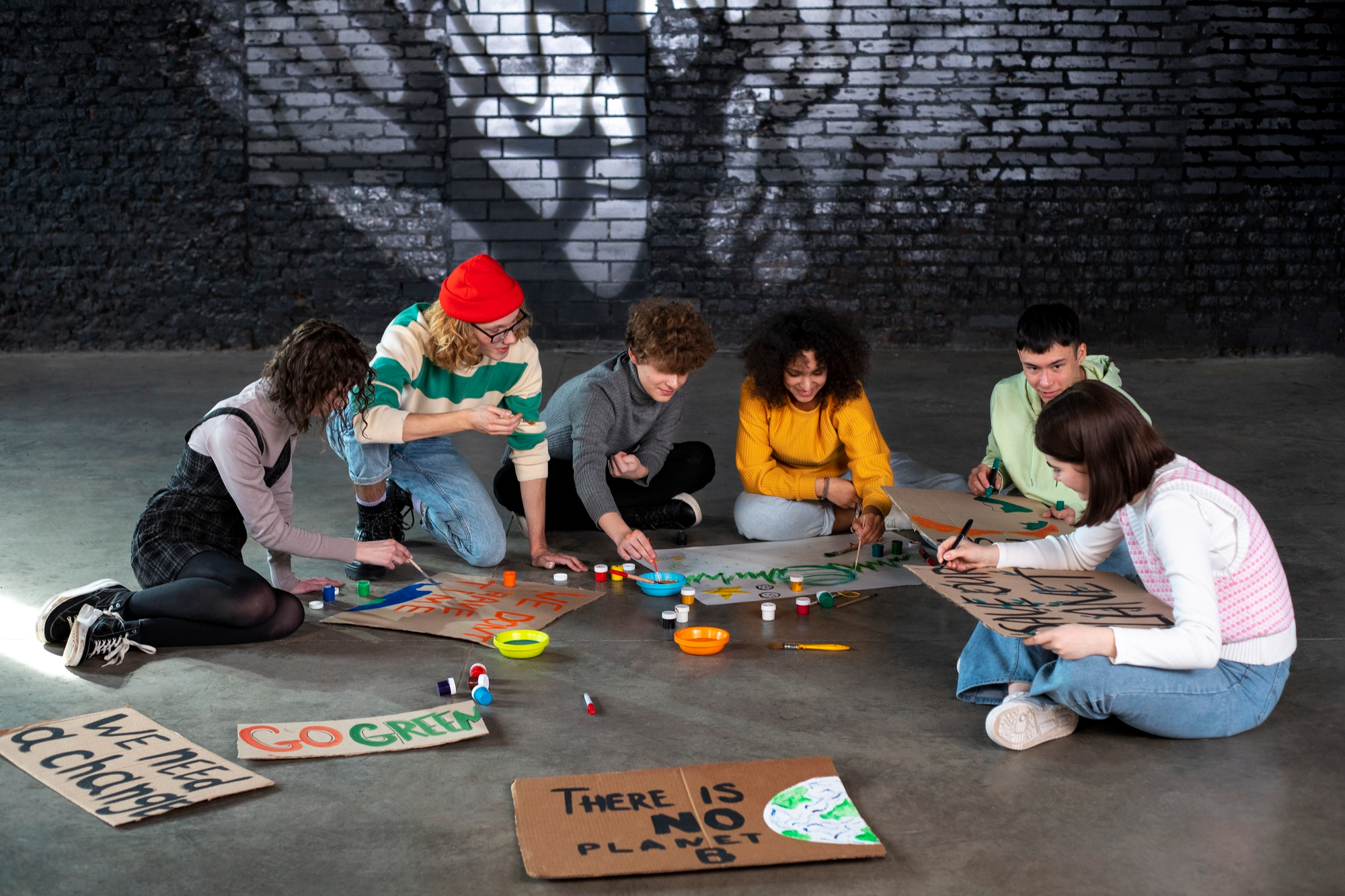17 Exciting After-School Activities to Keep Your Middle Schoolers Engaged

Who says learning only happens during the school day? After-school activities are a great way for middle schoolers to explore their interests, boost their academic performance, and develop crucial social skills. In this blog post, we will give you 17 exciting after-school activities that promise to keep your students or children engaged, interested, and inspired. And you’ll find out how an online attendance tracker can make a big difference in keeping everything organized.
The Role of After-School Activities in Middle Schoolers’ Development
After-school activities aren’t just for fun (although they certainly are that, too). These extracurriculars also play a significant role in a middle schooler’s development. Joining a club, participating in sports, or attending workshops can strengthen students’ academic achievement, foster their social skills, enhance their emotional well-being, and promote their overall growth.
Imagine a student gaining a deeper love for science while in Science Club or learning about teamwork and strategy during their Chess Club sessions. That’s the magic of after-school activities – they take education beyond textbooks and classrooms.
17 Exciting After-School Activities to Keep Your Middle-Schoolers Engaged
- Science Club: Science Club can be an exciting way to bring the wonders of science to life. It can involve hands-on experiments, visits to local science museums, or even small science fairs. Implementing it involves creating a curriculum that aligns with their science lessons and encourages curiosity and exploration. Utilize an online attendance tracker to ensure active participation and to monitor progress.
- Drama/Theater Group: A Drama/Theater group helps students tap into their creative side and express themselves freely. It can involve skits, mimes, and plays that reflect various themes. Starting this group consists in finding a dedicated space for practice, sourcing props and costumes, and maybe getting an enthusiastic teacher or parent to guide the sessions.
- Sports Teams: The thrill of team sports teaches collaboration and communication. Implementing it involves finding a suitable outdoor space or gym, gathering the necessary sports equipment, and appointing a coach. An online attendance tracker can be invaluable here, helping monitor practice sessions and keeping track of team members’ participation.
- Coding/Robotics Club: In this tech-driven world, a Coding/Robotics Club equips students with invaluable skills. Implementing it involves getting the necessary coding software or robotics kit and finding a tech-savvy mentor. Regular sessions with project-based learning would be ideal, helping students grasp the concepts better.
- Art Workshop: An Art Workshop can encourage creativity and provide an outlet for emotions. Implementing it involves setting up a creative space with art supplies and possibly engaging a local artist to teach various techniques.
- Homework/Study Group: A Homework/Study Group provides academic support in a non-intimidating environment. It involves setting up a quiet, well-lit room and pairing up students so they can help each other understand challenging concepts or complete homework.
- Music Band: Music-related activities improve discipline and foster an appreciation for the arts. Forming a band involves finding a suitable practice room, sourcing instruments, and finding a music teacher or experienced band member to guide sessions.
- Environmental Club: An Environmental Club can cultivate eco-conscious citizens. Implementing this involves planning activities like tree planting, trash pickup days, recycling drives, and climate change discussions. Use an online attendance tracker to monitor participation and reward active members.
- Chess or Board Games Club: Strategic games like chess can develop critical thinking skills and strategic planning. To start a club, find a comfortable space, procure various board games, and maybe even organize weekly or monthly tournaments to increase engagement.
- Creative Writing Workshop: This is an excellent platform to express thoughts and improve writing skills. Implementing this involves creating a comfortable environment, encouraging students to maintain a journal, and inviting local authors for guest sessions.
- Volunteer/Community Service Group: Volunteering can instil responsibility and empathy. This could involve collaborations with local NGOs, setting up charity drives, or volunteering at community centres. Track participation with an online attendance tracker to ensure regular involvement.
- Language Club: A Language Club can enhance linguistic skills and cultural understanding. It involves choosing a language to focus on, sourcing learning materials, and creating fun language-learning activities, such as themed days or film screenings.
- DIY Crafts Club: A DIY Crafts Club nurtures creativity and develops fine motor skills. Implementing this involves sourcing various craft materials and teaching students to create various items, from jewellery to home decor.
- Cooking Class: Cooking is not only a vital life skill but also an enjoyable activity that can teach middle-schoolers about nutrition, following instructions, and even subjects like mathematics and science through practical application. It also encourages creativity when students start experimenting with recipes on their own. Setting up a cooking class for middle-schoolers can be done in various ways, depending on the resources you have at your disposal. Here are some steps to consider:
- Cooking Space: You need a place where the cooking class can take place. If the school has a home economics department with a kitchen, this would be the perfect venue. If not, an alternative could be to use a local community center kitchen. In a more informal setting, the class could rotate through parents’ homes, with each parent supervising a session.
- Safety First: Cooking involves dealing with sharp utensils and hot surfaces, so it’s important to ensure safety rules are in place and strictly adhered to. Ensure that all students are aware of these rules. Also, make sure to accommodate any food allergies or dietary restrictions students may have.
- Hire a Professional or DIY: Depending on your budget, you could hire a professional chef to teach the class. However, if that is not an option, a parent, teacher, or older student with a passion for cooking can lead the sessions. There are also numerous online cooking classes designed for kids that you could utilize.
- Curriculum: Plan your curriculum. This should include a range of skills – from basic ones like reading a recipe, chopping vegetables, or making a simple sandwich, to more complex ones like baking or preparing a full meal. Also, remember to incorporate lessons about nutrition and healthy eating.
- Cooking Equipment and Ingredients: You’ll need to have cooking utensils and ingredients for each class. This could be funded by the school, donations, or a small fee charged to the participants to cover costs.
- Book Club: A Book Club is a fantastic way to cultivate a love for reading among middle schoolers. It helps to improve vocabulary, enhances critical thinking skills, nurtures empathy by understanding different characters, and fosters a sense of community among members. A book club can be an engaging platform for students to share thoughts, learn to respect others’ opinions, and, most importantly, develop lifelong reading habit.
- First, you’ll need to create a comfortable and cozy reading space. It could be a quiet corner of a classroom, a school library, or even an outdoor space under a tree, weather permitting. Add cushions, bean bags, or comfortable chairs to make it inviting.
- Choosing age-appropriate books is crucial. You could include a variety of genres – classics, fantasy, mystery, historical fiction, biographies, or science fiction. It’s also a good idea to include diverse books that reflect different cultures, experiences, and perspectives. Involve the students in the book selection process – this gives them a sense of ownership and makes them more likely to engage.
- Once everyone has read the book, schedule a discussion session. This is where critical thinking comes into play. Ask open-ended questions that provoke thought and encourage students to share their perspectives. Discuss the characters, plot, themes, and the students’ favorite or least favorite parts.
- Yoga/Meditation Class: Yoga and meditation can enhance physical fitness and mental health. It involves finding a peaceful space, hiring a qualified instructor or using online resources, and promoting a routine for regular practice.
- Photography Class: A Photography Class can hone a valuable skill while promoting creative expression. It involves sourcing cameras or encouraging the use of smartphones, teaching basic photography techniques, and possibly organizing photo walks or exhibitions to showcase students’ work. An online attendance tracker can be used to ensure regular participation and monitor student’s progress in mastering the skills.
Remember, the success of these activities relies heavily on consistent attendance and active participation. The use of an online attendance tracker can significantly streamline this process, making it easier for educators and parents to monitor and encourage student engagement.
Conclusion
There you have it – 17 exciting after-school activities that are sure to keep your middle schoolers engaged, excited, and eager to learn beyond the confines of their classrooms. Each activity offers a unique blend of education, skill-building, fun, and personal development. And with the help of an online attendance tracker, keeping track of participation and commitment becomes a breeze, letting educators and parents stay connected with the progress being made.
The goal of these activities is not just to occupy students’ time after school, but to help them discover new interests, develop invaluable skills, and enhance their academic and social growth. As we have seen, after-school activities are the perfect platforms to ignite curiosity, foster creativity, and build character. Hopefully, you can explore these options, and make after-school hours a time for growth, learning, and fun for our middle schoolers.
Related Posts

Navigating the Basics of Childcare Management: A Quick Guide

What To Avoid When Looking for an After-School Program Software
About Us
Lorem ipsum dolor sit amet, consectetur adipiscing elit. Phasellus pharetra pretium leo, sed lacinia nulla. Quisque iaculis, lectus sed eleifend vehicula, mi elit facilisis purus, vitae ornare magna elit non quam.



